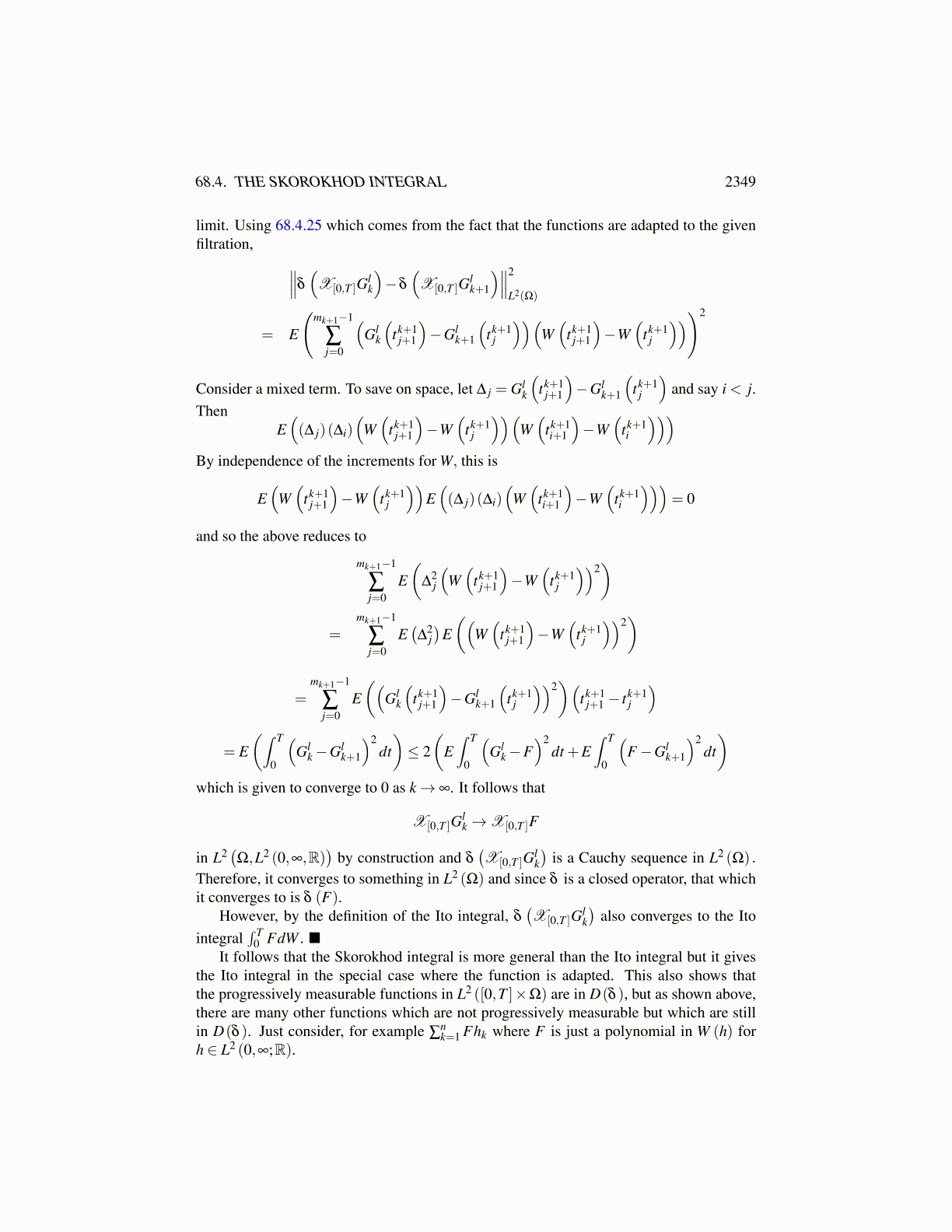
68.4. THE SKOROKHOD INTEGRAL 2349
How does the Skorokhod integral relate to the Ito integral? What about elementaryfunctions and so forth? Let 0 = t0 < t1 < · · ·< tn = T. Consider
n−1
∑k=0
FkX(tk,tk+1)
As shown above, this is one of the things in D(δ ) .
δ
(X(0,t)
n−1
∑k=0
FkX(tk,tk+1)
)= δ
(n−1
∑k=0
FkX[tk∧t,t∧tk+1]
)
=n−1
∑k=0
FkW(X[tk∧t,t∧tk+1]
)−⟨
DFk,X[tk∧t,t∧tk+1]
⟩=
n−1
∑k=0
Fk
(W(X(0,t∧tk+1)
)−W
(X(0,t∧tk)
))−⟨
DFk,X[tk∧t,t∧tk+1]
⟩In terms of the Wiener process, this is of the form
=n−1
∑k=0
Fk (W (t ∧ tk+1)−W (t ∧ tk))−⟨
DFk,X[0,t∧tk+1]−X[0,t∧tk]
⟩H
What ifFk = Fk
(W(X[0,tk]h1
), · · ·W
(X[0,tk]hn
))?
Let Ft ≡ σ(W(X[0,t]h
): h ∈ H
). Then this is clearly a filtration. If Fk is as just described,
then Fk is Ftk adapted.⟨DFk,X[0,t∧tk+1]−X[0,t∧tk]
⟩=∫
∞
0∑s
Ds (Fk)X(0,tk)hsX(t∧tk,t∧tk+1) = 0
because the intervals are disjoint. In this case, the troublesome term at the end vanishesand you are left with
n−1
∑k=0
Fk (W (t ∧ tk+1)−W (t ∧ tk)) (68.4.25)
which is similar to the usual definition for the Ito integral.What if F ∈ L2 (Ω× [0,T ]) and is progressively measurable. Does it have a Skorokhod
integral, and if so, is it the same as the Ito integral? Recall the following useful lemma. Itis Lemma 65.3.1 on Page 2233.
Lemma 68.4.7 Let Φ : [0,T ]×Ω→ E, be B ([0,T ])×F measurable and suppose
Φ ∈ K ≡ Lp ([0,T ]×Ω;E) , p≥ 1
Then there exists a sequence of nested partitions, Pk ⊆Pk+1,
Pk ≡{
tk0 , · · · , tk
mk
}